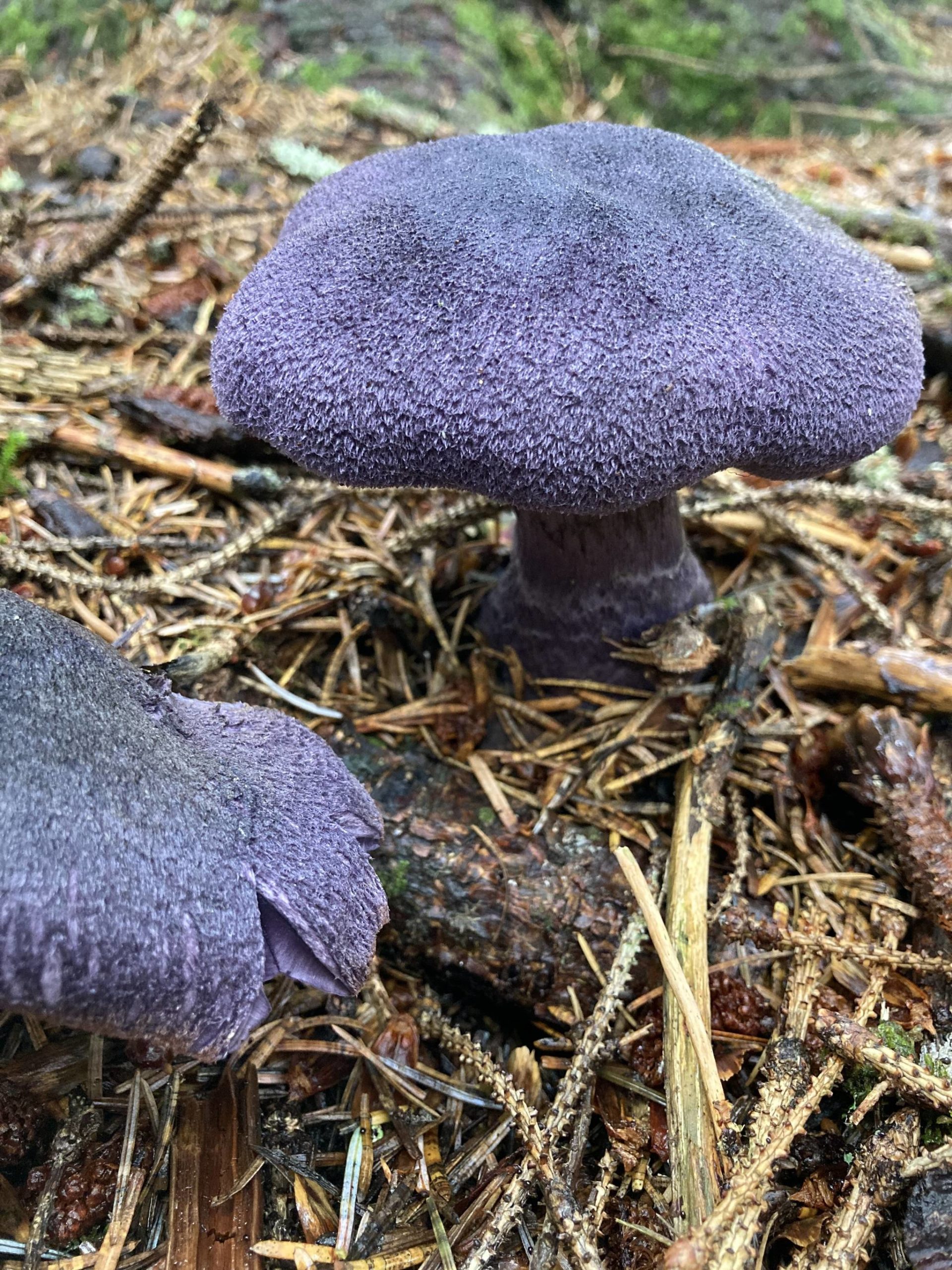On yet another gray, wet day, some friends went up the Eaglecrest Road in early September, frequently stepping off the road to make way for big equipment. Some headed for the Nest, while I and some others searched for the rare white-petalled variety of dwarf fireweed (aka river beauty). Sadly, it was done flowering — as was almost everything else. There were a few laggard monkshoods, yellow rattle-box, and groundsels, and I saw some delayed salmonberries just ripening. Deer cabbage leaves shone with yellows and golds. It was really autumn at Eaglecrest.
I was interested to hear reports of a Clark’s nutcracker in the area, and there were several bird-watchers on the road, hoping to spot it for themselves. This bird is normally found in montane conifer forests from central British Columbia southward, but I’m told it occasionally ranges north to the southern Yukon and is very rarely seen in our coastal conifers.
Looking back to our so-called summer: A trip to Crow Point and the Boy Scout Beach in mid-August found the little gentian called marsh felwort in its usual place near the trail on flat, gravelly soils. Five-pointed petals make bluish or lavender stars that usually appear in August.
This little annual plant occurs widely in the northern hemisphere. In the spruce groves there were fairy rings of white mushrooms and a clump of giant purple mushrooms known as purple (or violet) corts. Corts belong to a multi-species complex in the genus Cortinarius and form mycorrhizal associations with the roots of spruces and other trees. Also, around one big spruce tree, I saw a palatial squirrel midden with numerous entrances, one of the most impressive middens I’ve even seen. A lot of spruce cones were demolished to make a pile that size.
[On the Trails: Dirty tricks abound in the animal kingdom]
Both brown and black bears frequent these meadows, and I recently saw tracks of both species. We often see bear diggings here. Usually the bears have been digging roots of Angelica lucida (seawatch), occasionally also eating the lower stems and leaf stalks. But this time, there was one area where bears had concentrated on digging up beach lovage; dozens of holes were marked by the discarded reddish leaf stalks. When the roots of these perennial plants are eaten, presumably the population of those species is reduced, thus reducing their future availability as bear food — unless the plants set enough seed before the roots were eaten, and the seeds germinate well, to establish a new generation of those species in the area. Also, a few side shoots and root fragments survived the digs and can regenerate full plants, but would this be enough to replace those eaten?
Another August hike took us — squelching all the way — to Cropley Lake in hopes of finding a blue gentian in flower and the yellow fireweed. Success! Also known as yellow willowherb, it usually grows along damp creek sides and in montane meadows. It looks very different from the common pink-flowered fireweed, which is now classified in a different genus altogether. We also enjoyed some stands of the deep, rich purple monkshood flowers. There were hundreds of fringed grass of Parnassus flowers; in a previous essay, I related the history of how it may have got its name.
At the very end of August, I went with a friend to the first meadow on the Spaulding trail. All across this meadow, we found many small diggings in the moss, leaving no evidence of who made them or what might have been taken. We found the seed heads of the strange little wetland plant called Scheuchzeria (sometimes called pod-grass). Widespread in the northern hemisphere, it is currently classified in its own taxonomic family, and I have found very little information about its ecology and behavior.
A brief stop on a log for a snack provided a lucky sight of two chickadees: After conversing with each other in a nearby pine (no doubt about the odd lumps on the log), one by one they came down to a fruiting skunk cabbage. On each visit, the bird plucked one seed off the club-shaped infructescence, leaving a little empty pit, and flew off, but quickly returned. Jays and other critters sample these seeds too, sometimes leaving big bare patches, but it was good to see these little guys in action.
• Mary F. Willson is a retired professor of ecology. “On The Trails” is a weekly column that appears in the Juneau Empire every Wednesday.

